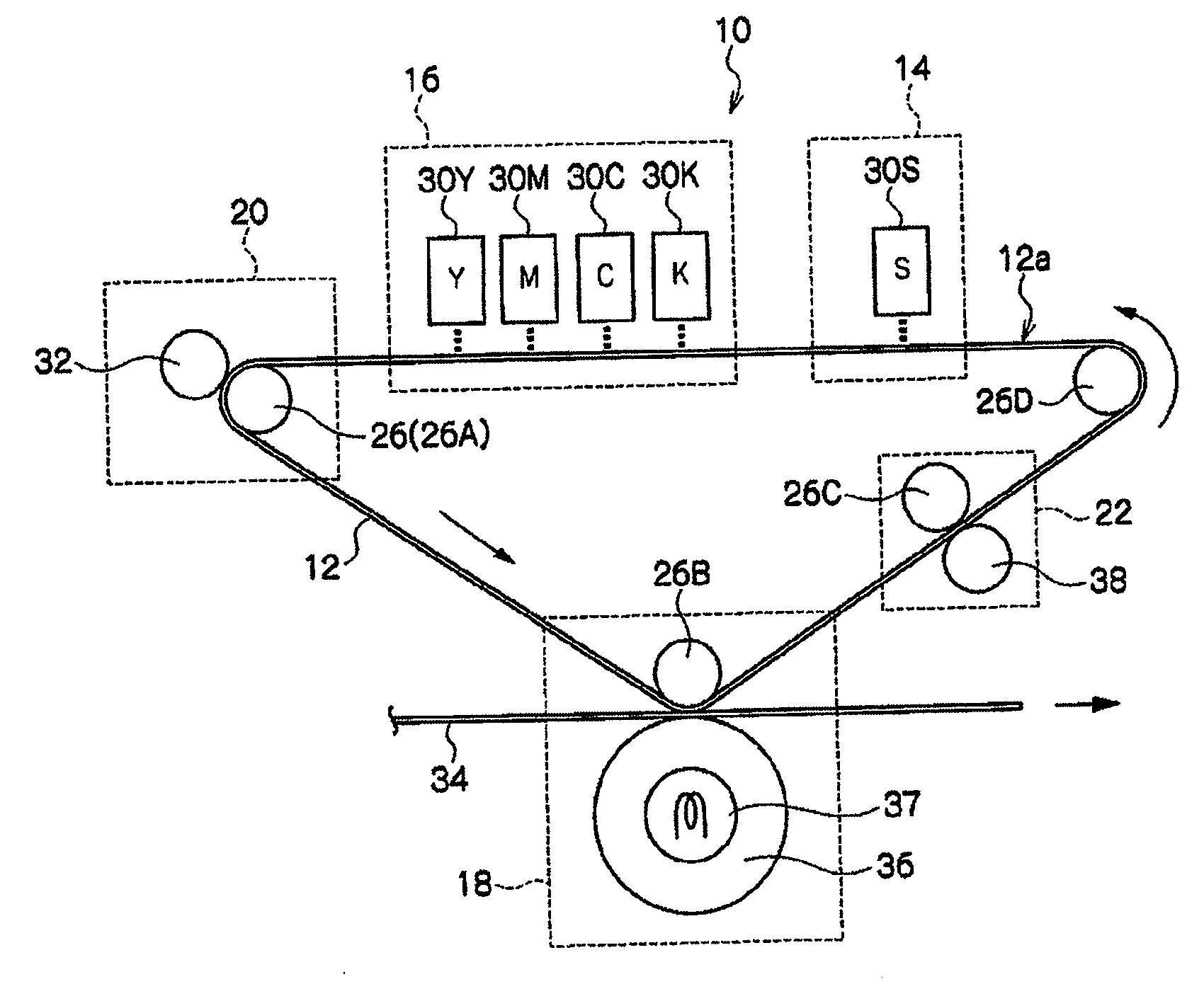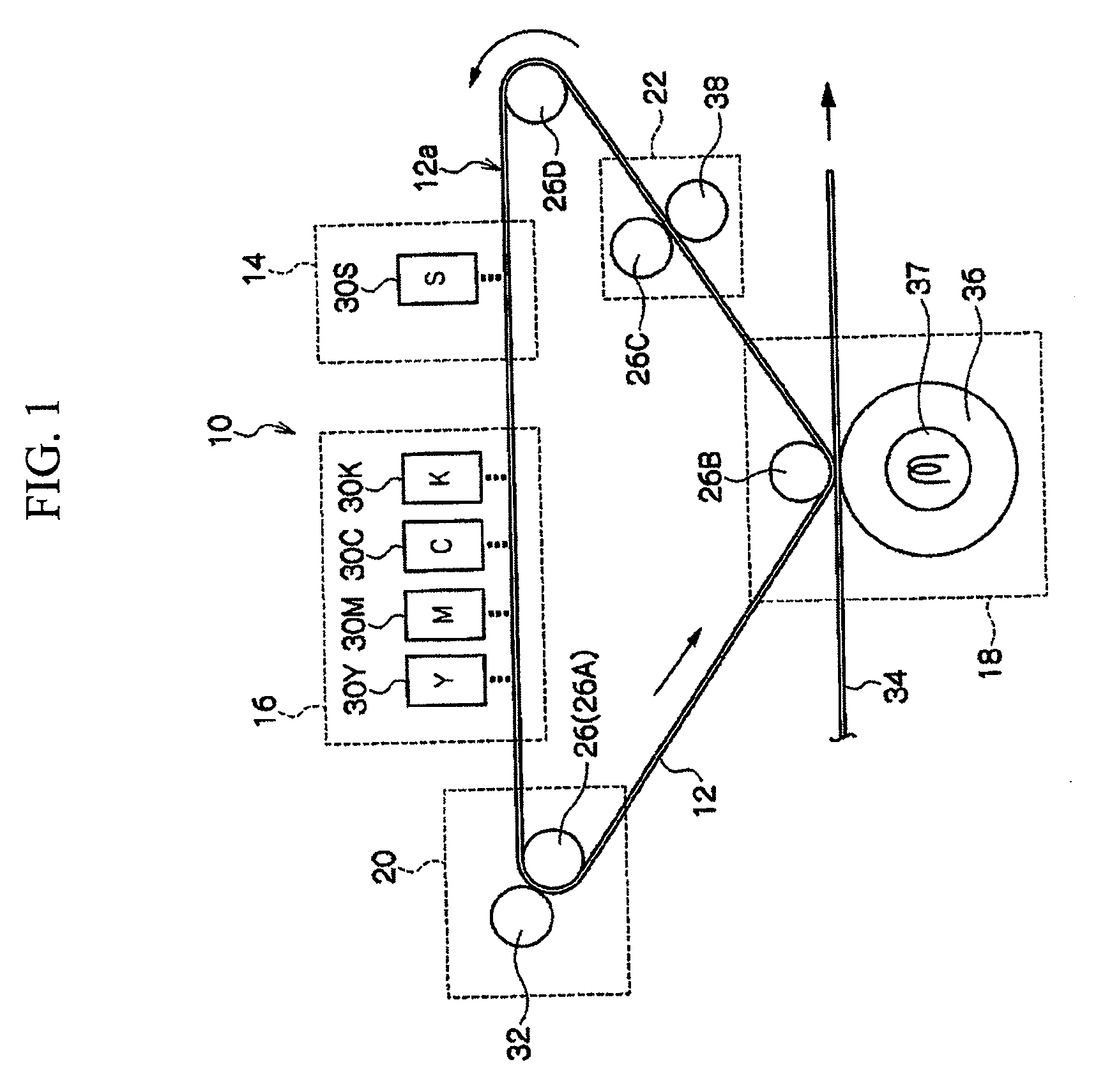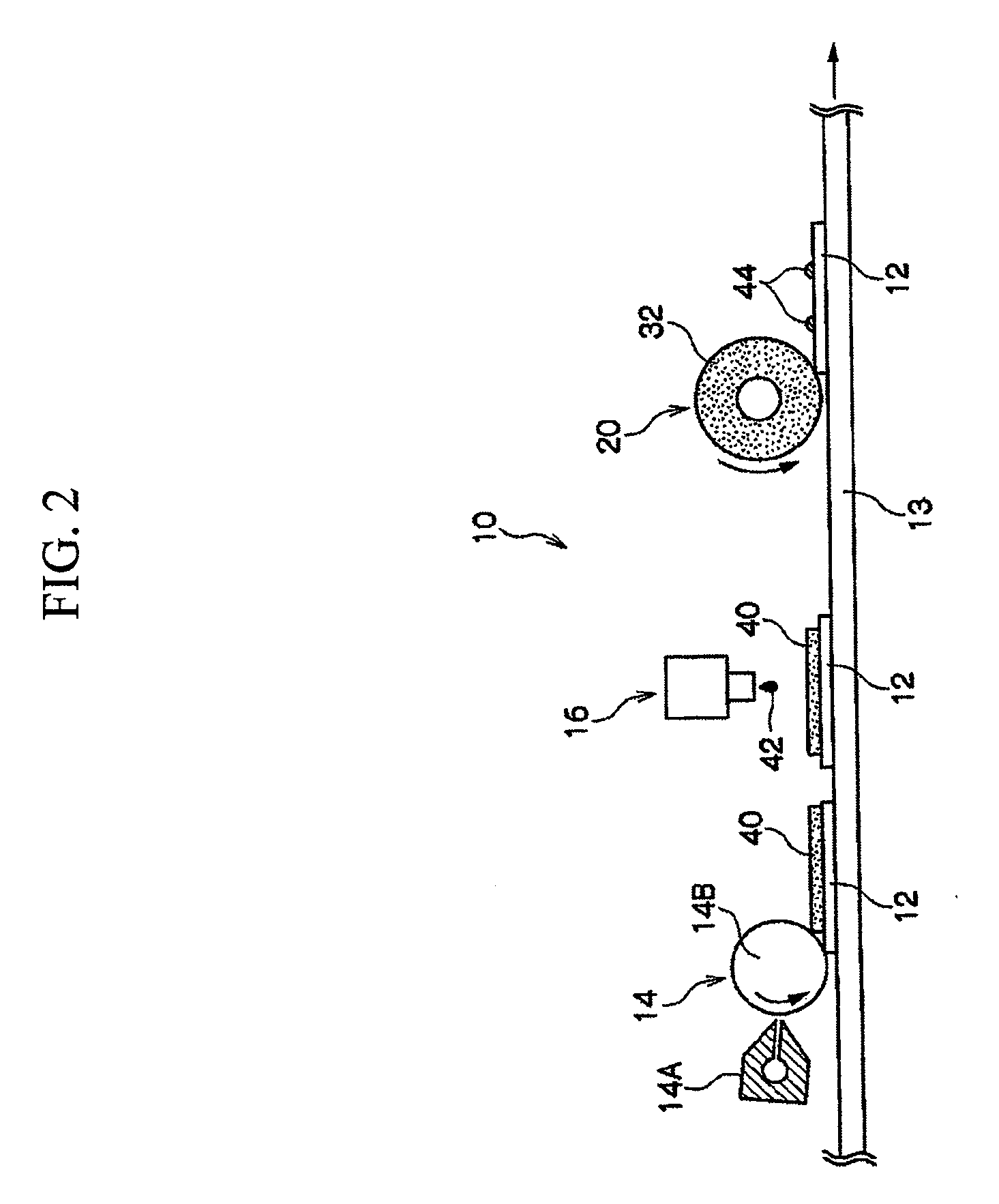Water-based ink composition, ink set and image recording method
a technology of water-based ink and composition, applied in the field an ink set and an image recording method, can solve the problems of increasing the size of the apparatus, and achieve the effect of suppressing image bleeding and rapid aggregate of water-based ink composition
- Summary
- Abstract
- Description
- Claims
- Application Information
AI Technical Summary
Benefits of technology
Problems solved by technology
Method used
Image
Examples
synthesis example 1
[0215]21.4 g of a carboxylate emulsifier (trade name: LATEMUL ASK, manufactured by Kao Corporation), 0.4 g of 1 mol / liter sodium hydroxide aqueous solution and 0.3 g of 2,2′-azobis(2-amidinopropane)dihydrochloride were added to 125 g of water, and uniformly dissolved therein. The resulting solution was heated to 70° C., and a mixture of 33 g of styrene and 27 g of butyl acrylate was added to the solution over 2 hours in nitrogen stream. The resulting mixture was heated at 70° C. for 2 hours and then at 80° C. for 3 hours to obtain latex PL-02A that is milky white and has high transparency, as a dispersion of water-insoluble particles (B). The latex PL-02A thus obtained had a pH of 9.1, a solid content concentration of 34% by weight, an average particle diameter of 40 μm (light scattering method), Tg of 10° C., and polymer acid value of 0 (calculated value).
synthesis example 2
[0216]Latexes PL-02B, PL-02C, PL-20, PL-06A, PL-06B and PL-03 were obtained in the same manner as in Synthesis Example 1 except that monomer mixtures shown in Table 1 were used in place of 33 g of styrene and 27 g of butyl acrylate, respectively. Properties of the latexes PL-02B, PL-02C, PL-20, PL-06A, PL-06B and PL-03 obtained are shown in Table 1.
synthesis example 3
[0217]21.4 g of a carboxylate emulsifier (trade name: LATEMUL ASK, manufactured by Kao Corporation), 6 g of 5 mol / liter sodium hydroxide aqueous solution and 0.3 g of 2,2′-azobis(2-amidinopropane)dihydrochloride were added to 120 g of water, and uniformly dissolved therein. The resulting solution was heated to 70° C., and a monomer mixture of 41.4 g of styrene, 13.8 g of butyl acrylate and 4.8 g of acrylic acid was added to the solution over 2 hours in nitrogen stream. The resulting mixture was heated at 70° C. for 2 hours and then at 80° C. for 3 hours. The mixture was cooled to a room temperature, and 1 mol / liter sodium hydroxide aqueous solution was added to the solution while stirring such that the pH becomes about 9, thereby obtaining latex PL-04A. Properties of the latex PL-04A are shown in Table 1.
PUM
| Property | Measurement | Unit |
|---|---|---|
| glass transition temperature | aaaaa | aaaaa |
| glass transition point | aaaaa | aaaaa |
| pKa | aaaaa | aaaaa |
Abstract
Description
Claims
Application Information
 Login to View More
Login to View More - R&D
- Intellectual Property
- Life Sciences
- Materials
- Tech Scout
- Unparalleled Data Quality
- Higher Quality Content
- 60% Fewer Hallucinations
Browse by: Latest US Patents, China's latest patents, Technical Efficacy Thesaurus, Application Domain, Technology Topic, Popular Technical Reports.
© 2025 PatSnap. All rights reserved.Legal|Privacy policy|Modern Slavery Act Transparency Statement|Sitemap|About US| Contact US: help@patsnap.com



